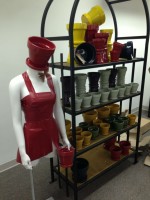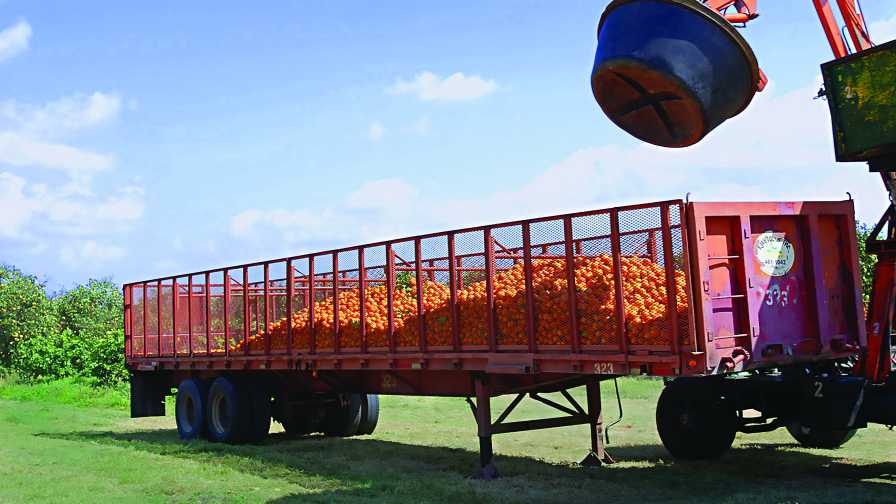Learn The Basics Of Good Displays

During a workshop I held for plant retailers, I shared a secret: I ran away from home when I was a child and ended up at the mall. My mom retrieved me and convinced me that it was ok to come home, but there is a part of me that feels like I never quite left the mall. I embraced the world of retail and visual merchandising, and I found it supported my desire to be creative and my passion for shopping.
The second secret I shared with the participants was that much of my success in visual merchandising happened because I focus first on the numbers.
Secret 1: It Starts With Numbers
Many people think visual folks simply come in and make the store look pretty. That is a great compliment, but what really excites me is when I see a great merchandising strategy or a great visual display has helped increase sales. To do that, you have to understand and analyze the numbers.
I’ll start a project by reviewing the numbers with my team. We’ll review top-selling items, key items, margin levels, inventory levels and any other factors that may help us determine product placement, capacities, adjacencies and key items for visual sight lines or displays. By first understanding the impact of sales data, we can better determine a strategy.
One of our mottos at ZenGenius is that every product has a right place at the right time and for the right reason. That’s the essence of smart merchandising.
Secret 2: Get Organized
I believe that great visual merchandising is part organization and part creativity. Organizing the product so it is easy for customers to shop and understand the assortment in a short amount of time is a main factor in merchandising.
The basics are universal in retail across all types of product categories:
- Vertical merchandising
- Horizontal merchandising
- Pyramids
- Consistency
- Repetition
- Color
Organizing your systems is just as important. That means identifying merchandising guidelines for every key item or category in your store. You should also create a floor plan and a system for planning out your merchandising strategies.
Don’t be afraid to break the rules. But learn them so you know when to apply them and when to break them.
Secrets In Action
Basic Merchandising. For the first team activity at the workshop, we broke into three groups and focused on these basics while merchandising colorful pottery from Border Concepts and The Gardeners collection from Proven Winners.
I saw a common and understandable pattern. The teams wanted to skip the basics and dive right into the fun, creative ideas. As the teams worked, I had to continue to urge them to focus on the organizing first and leave the creative layer for later. In a big group with talented folks, however, creativity is hard to keep at bay.
Story Telling. Before he wrote “The Wizard of Oz,” L. Frank Baum owned a store and was fascinated by the art, theater and magic of a visual merchandising. Visual merchandising is often about telling a story. Every product and every collection has a story that can be brought to life through great merchandising, cross merchandising, signage, graphics, propping and display.
In the second phase of the workshop, teams were challenged to tell us a Valentine’s Day story.
Using tools and supplies provided them, the teams created layers of signage to tell the story. They created a hierarchy of messages, starting with an overall theme. Smaller signs identified features, benefits and pricing information.
Layering on signage allows your customers to understand your brand’s personality or voice. The stories our teams created offered indications of a good sense of humor, a sense of whimsy and certainly a sense of style and fashion. I am always impressed by the sense of humor and creativity that exists within the farm marketing industry.
Secret 3: The Wow Factor
The last secret I shared was my philosophy that every store should offer at least one wow moment, an over-the-top visual experience that makes the customer say, “Wow!” “Wow, I love that! Wow, I want that! Wow, how did they do that?”
Before starting on a wow display, you should first determine the best location and product or category that your display will be inspired by.
Once you have that basic decision made, there are a number of steps you can take to really make your display an attention grabber. Take note of trends, as well as materials you may have on hand already. Partner with your suppliers and vendors to help support the vision for your wow moment. Make sure you have enough product to support your display while it remains in place. A wow display is one that could potentially stay in place for the duration of the season. A really great wow display can ignite conversation within your community and inspire posts on social media. It can also be an opportunity for great stories for the press and for your own PR.
This is really an opportunity to turn up the creativity. Learn from retailers like Anthropologie that have become known for their clever and inventive wow moments. Anthropologie does so not only in their store windows but in several wow moments throughout the entire store.
Create Your Own Workshop
A great way to elevate team morale and awareness of visual merchandising is to have a team meeting focused on creating a wow display together.
This type of exercise becomes an ice breaker and a morale booster, which is also loads of fun at the same time. You’ll also be able to observe your team and identify team members that have specific talent in visual merchandising. And if you see the phones and cameras coming out to take a photo to share with friends and family, you will know that something special has been created.








